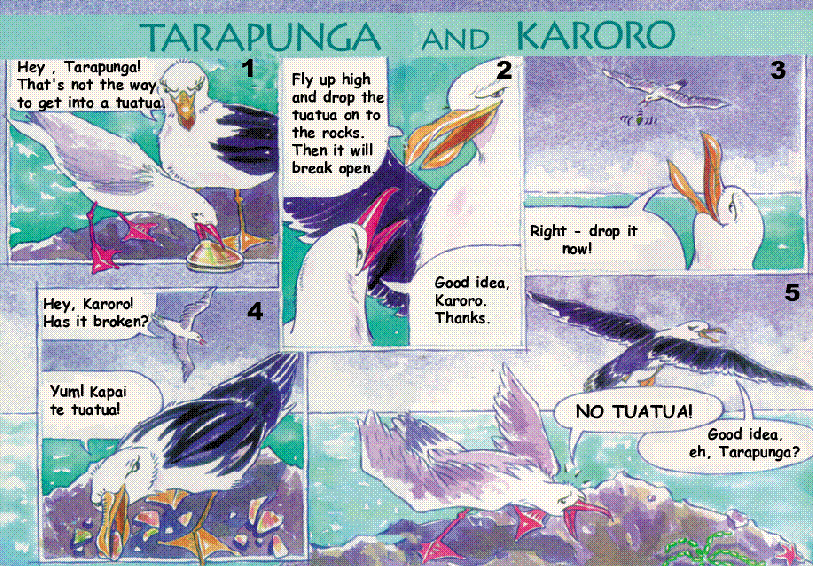Tarapunga and Karoro
This task is about different techniques authors use when writing a cartoon,
Read the cartoon Tarapunga and Karoro, pages 16 to 17 of School Journal, Part 1, No. 1, 1994, to help answer the questions.

| a) |
What is the name of the bird that eats the tuatua at the end of the story?
______________
|
|
|
b)
|
Look at the shell in Picture 3. What do the lines near the shell show? _______________
|
|
| c) |
What are two things about the drawing of Tarapunga in Picture 5, which show he feels upset?
1. ______________________________ 2. ______________________________
|
|
|
d)
|
How have the words "No Tuatua" been written in Picture 5, to show that Tarapunga is speaking in a loud voice?
|
|
| e) |
Which of these titles would be best for this story? (Circle one)
The Good Idea | The Unkind Trick | How to Break Open Tuatua | Two Friends
|

